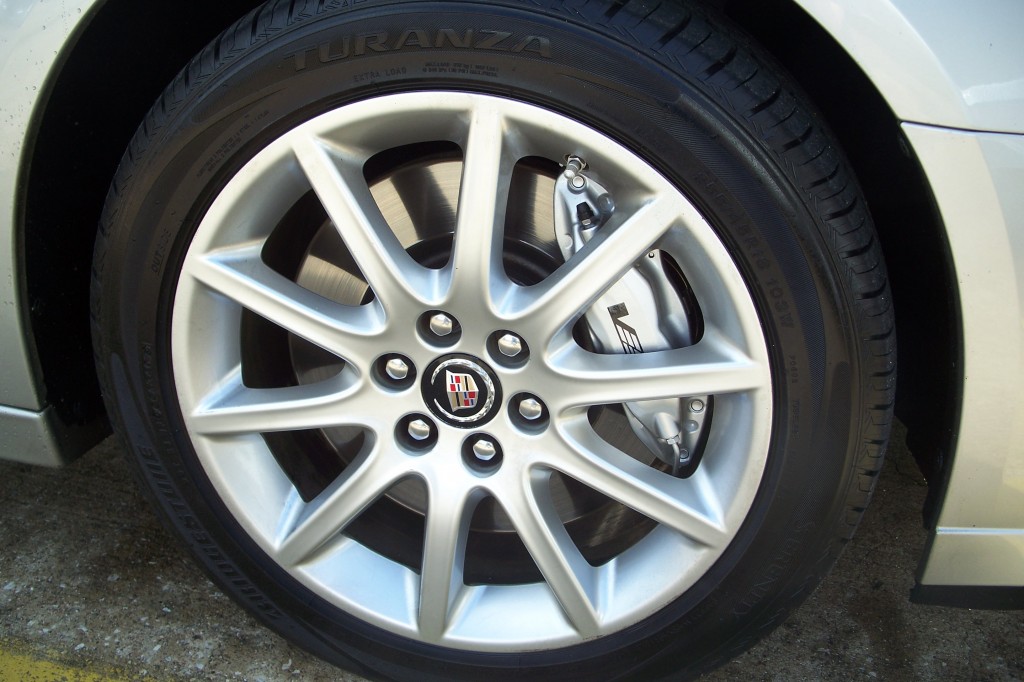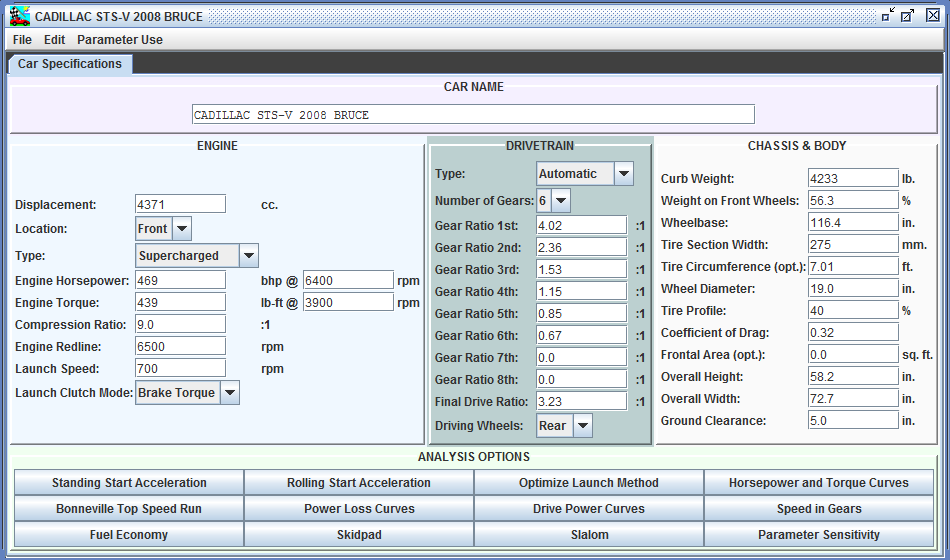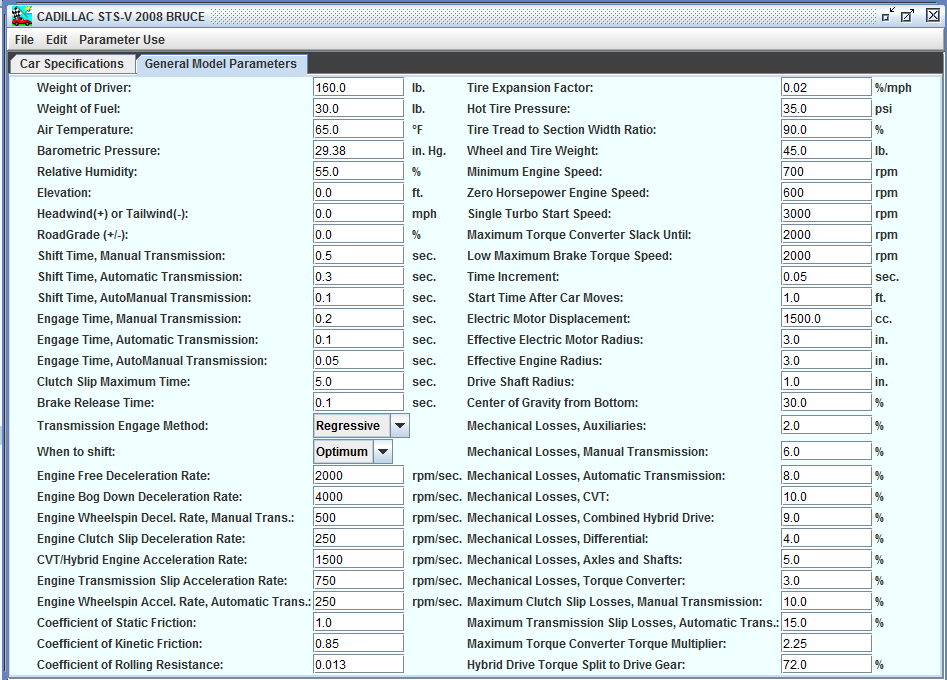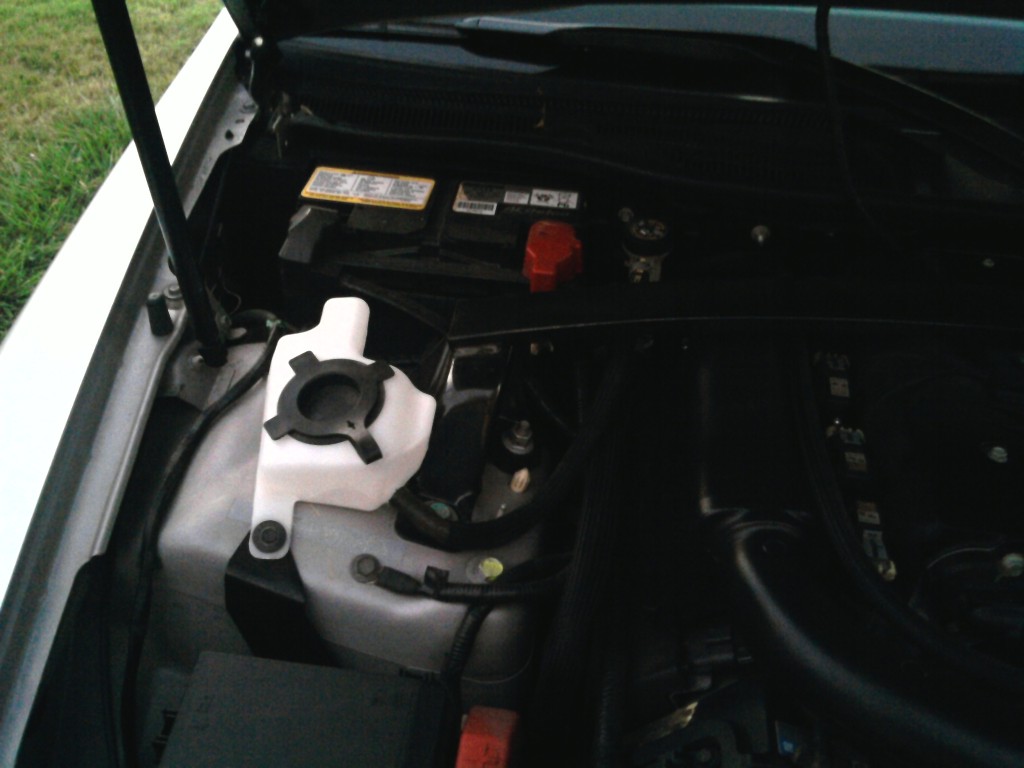I like my Cadillacs as touring cars. Cadillac models make terrific road trip cars since they are comfortable to travel over long distances, yet offer terrific performance.
Because of my recent tire issue I recognize I am sensitive on this topic, and perhaps old-fashioned, but I would like to have a spare tire in the trunk for when you just have to have a spare. My 2008 Cadillac STS-V does not have a spare; it came with runflat tires instead. This seemed news to the roadside assistance people, who although they were happy to come put on the spare for me were not all that much help other than to offer to tow the car. I happened to be alone on a Sunday morning that day, but if I had been on vacation with my Wife it would be been a bigger deal.
The front wheels on the V are 18″ x 8.5″ x 51mm offset; the rears are 19″ x 9″ x 56mm offset. The front tires are 255/45-18 and the rears are 275/40-19. The OEM wheels are made by Speedline, and are nice wheels.
The wheels are different sizes front to back, and all the tires are directional, which means they have to be mounted to rotate in a specific direction. So the right front can’t be put on the left front without remounting the tire on the wheel. This is perhaps the root of the issue with having a spare, and why the car came with the runflats.
My first thought was since the outer diameter of the 255/45-18 and the 275/40-19 are very similar, just put the 18s on all the way around the STS-V, front and back. Then purchase a spare wheel/tire, and put it in the trunk, along with a jack, etc. So plan A would require 3 new 18″ wheels and 3 new tires.
The directional spare tire/wheel 50% of the time would be on ‘wrong’, but would do to get us to the next stop or two until we could get a proper tire mounted.
Next I think plan B is to consider that the front and rears ARE almost the same outer diameter. So if a front wheel/tire will mount on the rear, then the same spare could also work for getting to the next stop or two. There is a difference in offset between the fronts and rears, and wheel width, but I will have to examine on the V for fitment. This would also impact ‘plan A’, since it is possible that a front wheel/tire won’t work on the rear at all.
BUT if a front wheel/tire will work on the back, then a front spare wheel/tire would work as a spare for all corners, and plan B can be to just get one 18″ wheel/tire combo, put it in the trunk with jack and wrench and mark it done at less out of pocket. That would satisfy my sense of frequently not needed versus like to have. The tire pressure monitoring system won’t like ANY of this, but that can be sorted out.







